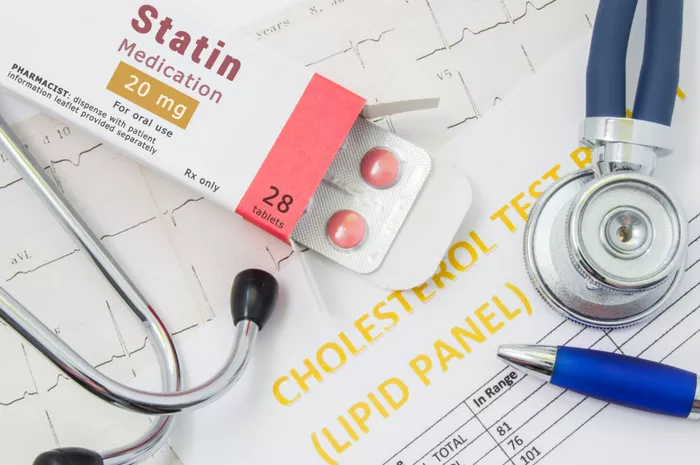Statin medications are widely prescribed for lowering cholesterol levels and reducing the risk of heart disease. However, like any medication, they can come with potential side effects. Understanding the differences in side effect profiles among statins can help healthcare providers and patients make informed decisions. In this article, we will explore which statin medication tends to have the least side effects based on current medical knowledge and research.
What Are Statins?
Statins are a class of drugs that work by blocking a substance your liver needs to make cholesterol. By lowering the production of cholesterol in the body, statins help reduce the risk of plaque buildup in the arteries, which can lead to heart attacks and strokes. Some common statin medications include atorvastatin (Lipitor), rosuvastatin (Crestor), simvastatin (Zocor), and pravastatin (Pravachol), among others.
Understanding Statin Side Effects
While statins are generally well-tolerated by most people, they can cause side effects in some individuals. The most common side effects associated with statin use include:
1. Muscle Pain and Weakness: This is one of the most commonly reported side effects of statins. Some people may experience mild muscle aches, while others may develop more severe muscle pain or weakness, known as myopathy.
2. Liver Enzyme Abnormalities: Statins can sometimes cause an increase in liver enzymes, which are markers of liver function. In most cases, this is not a cause for concern, but healthcare providers may monitor liver function tests periodically.
3. Digestive Issues: Some people may experience digestive problems such as nausea, constipation, diarrhea, or abdominal pain while taking statins.
4. Headache or Dizziness: These are less common side effects but can occur in some individuals.
5. Increased Blood Sugar Levels: In rare cases, statins may lead to higher blood sugar levels, which can be a concern for individuals with diabetes or prediabetes.
6. Memory Problems or Confusion: There have been reports of cognitive side effects such as memory loss or confusion with statin use, although these are rare and not well-established.
Which Statin Has the Least Side Effects?
When it comes to determining which statin medication has the least side effects, several factors come into play. It’s essential to recognize that individual responses to statins can vary widely, and what works well for one person may not be the best choice for another. However, based on clinical studies and real-world experience, certain trends regarding side effects have emerged:
1. Pravastatin (Pravachol): Pravastatin is often considered to have a relatively low risk of causing muscle-related side effects compared to other statins. It is also less likely to interact with other medications, making it a suitable option for people taking multiple drugs.
2. Rosuvastatin (Crestor): Rosuvastatin is another statin that is generally well-tolerated and has a lower risk of causing muscle-related side effects. It is available in lower doses compared to some other statins, which may be beneficial for individuals who require a less potent medication.
3. Atorvastatin (Lipitor): While atorvastatin is effective at lowering cholesterol levels, it has a slightly higher risk of causing muscle-related side effects compared to pravastatin and rosuvastatin. However, many people tolerate atorvastatin well, especially at lower doses.
4. Simvastatin (Zocor): Simvastatin is an older statin medication that has been associated with a higher risk of muscle-related side effects, particularly at higher doses. It is often used when other statins are not suitable or available due to cost considerations.
Individualizing Statin Therapy
It’s important to note that the choice of statin medication should be individualized based on factors such as:
1. Cholesterol Levels: The severity of your cholesterol levels will influence the choice of statin and the dosage required to achieve optimal results.
2. Medical History: Your medical history, including any existing conditions or medications you are taking, will impact which statin is most suitable for you.
3. Risk Factors: Your overall risk of heart disease, including factors such as age, family history, smoking status, and blood pressure, will guide the decision-making process.
Minimizing Statin Side Effects
While statins can have side effects, there are steps you can take to minimize their impact:
1. Regular Monitoring: Regular check-ups and blood tests can help monitor your response to statin therapy and detect any potential side effects early.
2. Dosage Adjustment: Sometimes, adjusting the dosage of the statin or trying a different statin medication can help reduce side effects while still effectively lowering cholesterol levels.
3. Lifestyle Modifications: Making healthy lifestyle changes such as following a heart-healthy diet, exercising regularly, maintaining a healthy weight, and avoiding smoking can complement statin therapy and improve overall cardiovascular health.
4. Communication with Your Healthcare Provider: Keep an open line of communication with your healthcare provider regarding any concerns or side effects you may experience. They can offer guidance and make adjustments to your treatment plan as needed.
Conclusion
In conclusion, statin medications are valuable tools for managing cholesterol levels and reducing the risk of heart disease. While all statins have the potential to cause side effects, choosing the right statin for you involves considering factors such as side effect profiles, individual response, cholesterol levels, medical history, and risk factors. Pravastatin and rosuvastatin are often considered to have lower risks of muscle-related side effects compared to other statins, but individualized treatment plans are crucial for optimizing effectiveness and minimizing side effects. Working closely with your healthcare provider can help ensure that you receive the most appropriate statin therapy for your needs while minimizing potential side effects.


